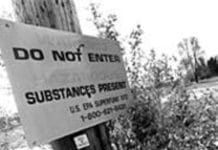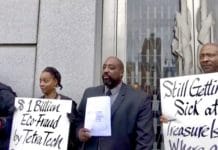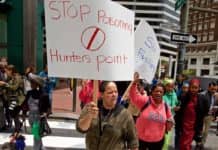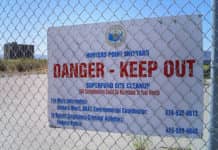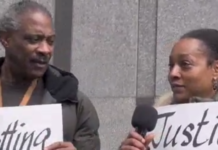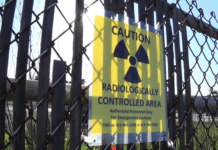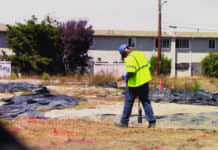
by Ahimsa Porter Sumchai, M.D.
In 15th century Italy, an inventor, artist, scientist, anatomist, engineer, architect and urban planner named Leonardo da Vinci wrote in a parchment notebook the following words: “The world is made up of three types of people. Those who see, those who must be shown and those who do not see.”
Over 500 years have passed and nowhere in the world do Leonardo’s words resonate with greater truth than in Bayview Hunters Point, where a civil war for environmental justice swells in numbers, showing those who cannot – and will not – see the error of their ways.
A struggle for survival that has sprouted from a tiny acorn to a mighty oak. A struggle for the future that branches upwards to the light in manifold directions, challenging the conscience of San Francisco’s political, scientific, moral, social activist, economic and religious status quo.
The argument of the Gita
“Even if the whole world did wrong, should we do likewise?” asked Mohandas Karamchand Gandhi, who waged an eight-year campaign against the color bar in South Africa beginning in 1913 . He coined the term “non-violence” to translate “ahimsa” and the truth it serves to realize. He writes, “Ahimsa is the greatest activist force in the world … Ahimsa is my God and Truth is my God. When I look for Ahimsa, Truth says: Find it through me. When I look for Truth, Ahimsa says: Find it through me.”
Gandhi taught us to strive for moral authenticity. To bring our inner state and outer conduct into alignment by speaking and acting on one’s true convictions.
The Bhagavad Gita is a 700-verse text set in the Great War of the Bharatas epic of ancient India. Ghandi studied the Gita for 60 years and considered it a code of conduct for the “ascent of the soul through its history in evolution.”
The Gita depicts the beginning of the great war to save justice and civilization, in which Arjuna, a prince and warrior for the forces of justice shrinks on seeing his nearest relations, teachers and friends in the opposing army. Lord Krishna is his charioteer and guide. Arjuna is required by duty, as chief commander in a righteous war, to kill his relatives, companions, teachers and elders who oppose him. Arjuna voices the argument that those he would have to kill in the battle for justice are those for whom he would want to win the kingdom. The bow slips from his hands and Arjuna says he cannot fight.
Ghandi interprets the opening scene of the Gita as depicting the origin of human conflict. It is “the battle within.” The Gita is a metaphor. It does not teach fighting war. It teaches self-examination and struggle with one’s ego. Arjuna does not refuse to fight on principle but from attachment to his relatives and friends. Ghandi writes that the root of evil is the ego, which puts pride of self and pride of possession and power behind all acts. Ghandi calls upon the one who “knows better” to break the chain of evil and injustice. “Even if the whole world did wrong, should we do likewise?”
According to Gandhi, love is an infinite power because evil has no power. Ahimsa must be infallible because nothing exists but truth – of which love is only the active aspect.
Open Letter to Dr. James McCray of Lennar’s Tabernacle Affiliated Developers
On Tuesday, Feb. 25, 1992, at 10:30 a.m., George Donald Porter was eulogized by Rev. Dr. James McCray Jr., pastor of Jones Memorial United Methodist Church in San Francisco.
According to his obituary, George Donald Porter was born in St. Louis, Missouri, on March 6, 1933, the son of Roberta Estelle and George Wilbert Porter. The Porter family relocated to San Francisco when George was 9 years old. He completed secondary education at George Washington High and City College of San Francisco. He attended services at Jones Memorial United Methodist Church beginning in the early 1950s and continued there for life. He married Mildred Lee and fathered three children: Dr. Ahimsa Porter Sumchai, Terrance and Roger Porter.
George D. Porter dedicated his career to the International Longshoremen’s Workers Union Local 34, where he was employed as a longshore walking boss, shipping clerk and administrator until his retirement in 1992. He died in the care of his loving family on the morning of Feb. 19, 1992. His immediate cause of death was dehydration. His final cause of death was pulmonary asbestosis.
On Tuesday morning, Feb. 19, 1992, my son Nate came hurriedly downstairs to my bedroom and said, “Something’s wrong with pawpaw.” When I entered my father’s bedroom, it was apparent he was dead. He was terribly dehydrated but warm. My son and I transferred him from his bed onto the floor and began CPR. Paramedics were late in arriving and, at their recommendation, we discontinued life support efforts. By then he showed signs of early rigor mortis. The San Francisco coroner’s office accepted my report as the physician of attendance at the time of death and released my father’s body to Osborne’s Funeral Directors.
Fifteen years have passed since my father’s death. It is never too late to say thank you to people who support you during a moment of grief or loss and I wish to extend my eternal gratitude to Rev. James McCray and the Jones Methodist Church family.
A class action lawsuit filed by Wartnick Law Firm on behalf of plaintiff George Donald Porter, whose contributing cause of death was pulmonary asbestosis, was settled out of court. His source of exposure was determined to be the warehouses sited on the Hunters Point Shipyard where friable man-made asbestos is present and documented in environmental studies including the Finding of Suitability to Transfer for Parcel A.
Parcel A was transferred to the City and County of San Francisco in 2004 with deed restrictions against man-made asbestos used as insulation material in buildings, appliances and underground wiring. Additionally, naturally occurring asbestos, residual soil contaminants and particulates from toxic dust are causing children in public and private schools surrounding the Shipyard construction site operated by Lennar Corp. to experience nose bleeds, worsening asthma and headaches. The toxic dust exposure is contributing to high truancy rates, according to findings made public by the San Francisco Unified School District.
The African-American ministers of the Tabernacle Group of Developers are faltering “men of God” who perpetuate Lennar’s genocidal actions out of ego, pride of self, pride of possession and power. Men like Dr. McCray, who helped bury my father, Rev. Calvin Jones, who I attended elementary school with, and Aurelius Walker, whose financially strapped housing development at Candlestick Point was taken over by Lennar Corp.
Like Arjuna, I stand on the frontlines of the civil war for environmental justice. A battle that pits me against people I once respected and loved. People I once looked to for recognition, spiritual guidance and direction. People I admired, sought approval from and relied upon for support. People I now stand against on the battlefield of moral authenticity.
Contact Bay View Health and Environmental Science Editor Dr. Ahimsa Porter Sumchai at (415) 835-4763 or asumchai@sfbayviewnews.wpenginepowered.com.

 Store
Store




